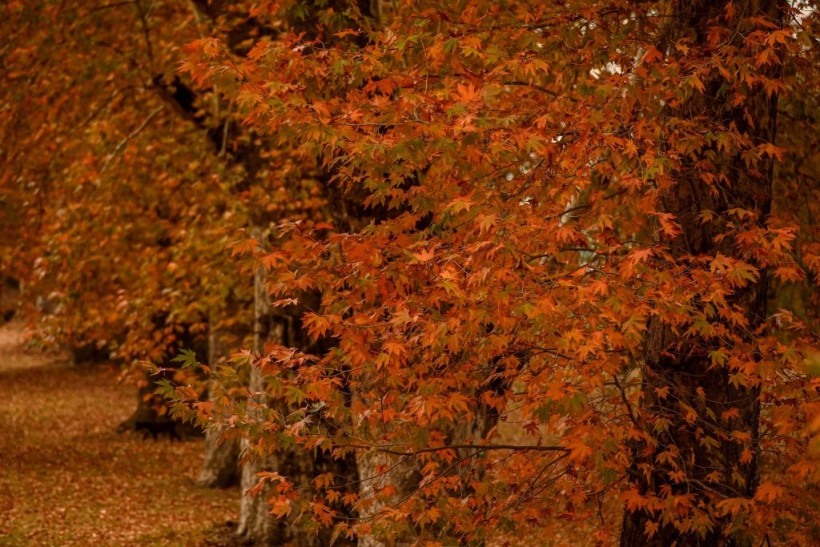Sooty bark disease is a fungal infection that affects various species of maples, especially sycamore (Acer pseudoplatanus).
The disease is caused by the fungus Cryptostroma corticale, which grows under the bark of infected trees and produces massive amounts of black spores.
The spores are released when the bark falls off, creating a sooty appearance on the trunk and branches.
The disease can kill the trees and also cause respiratory problems in humans who inhale the spores.
Symptoms and Spread of the Disease
 (Photo : TAUSEEF MUSTAFA/AFP via Getty Images)
(Photo : TAUSEEF MUSTAFA/AFP via Getty Images)

Sooty bark disease causes wilting of the crown and dieback of branches in affected trees. The fungus invades the cambium and phloem of the tree, disrupting water and nutrient transport, as per Phys.org.
The disease is more likely to occur when the trees are under stress, such as during hot and dry weather conditions.
The disease was first described in North America in 1889, but it has since spread to Europe, where it has caused severe outbreaks in some areas.
The disease can affect other maple species besides sycamore, such as field maple (Acer campestre), Norway maple (Acer platanoides), box elder (Acer negundo), red maple (Acer rubrum), and bigleaf maple (Acer macrophyllum)
Health Risks and Management Strategies
Sooty bark disease poses a health risk to humans who are exposed to the spores of the fungus.
The spores are highly allergenic and can cause maple bark disease (MBD), which is a hypersensitivity pneumonitis (HP), an inflammation of the lungs.
The symptoms include breathlessness, fever, night sweats, chills, and weight loss.
The disease has been reported among workers in the paper industry who handle infected logs, as well as among people who live near infected trees.
Also Read: Striped Maple Trees Often Change Sexes, with Females More Likely to Die
How can SBD and MBD be monitored and prevented?
One way to monitor the presence and spread of C. corticale spores is to use pollen sampling stations, as per Forest Pathology.
These are devices that collect airborne particles and allow identification of different types of pollen and fungal spores.
A recent study in Switzerland used this method to detect C. corticale spores in several locations where SBD was confirmed or suspected.
To prevent contact with the spores, people working on infested wood or trees have to wear personal protective equipment.
To protect the public, areas with infested maples have to be cordoned off, and the trees should be removed. This is also for impeding further spreading of the spores.
To diagnose MBD correctly and provide successful therapy, multidisciplinary expertise including pulmonologists, radiologists, pathologists, and occupational physicians is recommended.
If MBD is diagnosed in time, the removal of the triggering fungus or the infested maple wood leads to complete recovery in most cases.
Chronic HP can lead to lung fibrosis and a total loss of lung function culminating in death.
Sooty bark disease is a serious threat to maples and humans alike.
By being aware of its symptoms, spread, and health risks, we can take steps to protect ourselves and our environment from this fungal menace.
Related article: Sugar Maple Unlikely to Be Moved by Climate Change
© 2024 NatureWorldNews.com All rights reserved. Do not reproduce without permission.

![Tsunami Hazard Zones: New US Map Shows Places at Risk of Flooding and Tsunamis Amid Rising Sea Levels [NOAA]](https://1471793142.rsc.cdn77.org/data/thumbs/full/70325/280/157/50/40/tsunami-hazard-zones-new-us-map-shows-places-at-risk-of-flooding-and-tsunamis-amid-rising-sea-levels-noaa.jpg)



